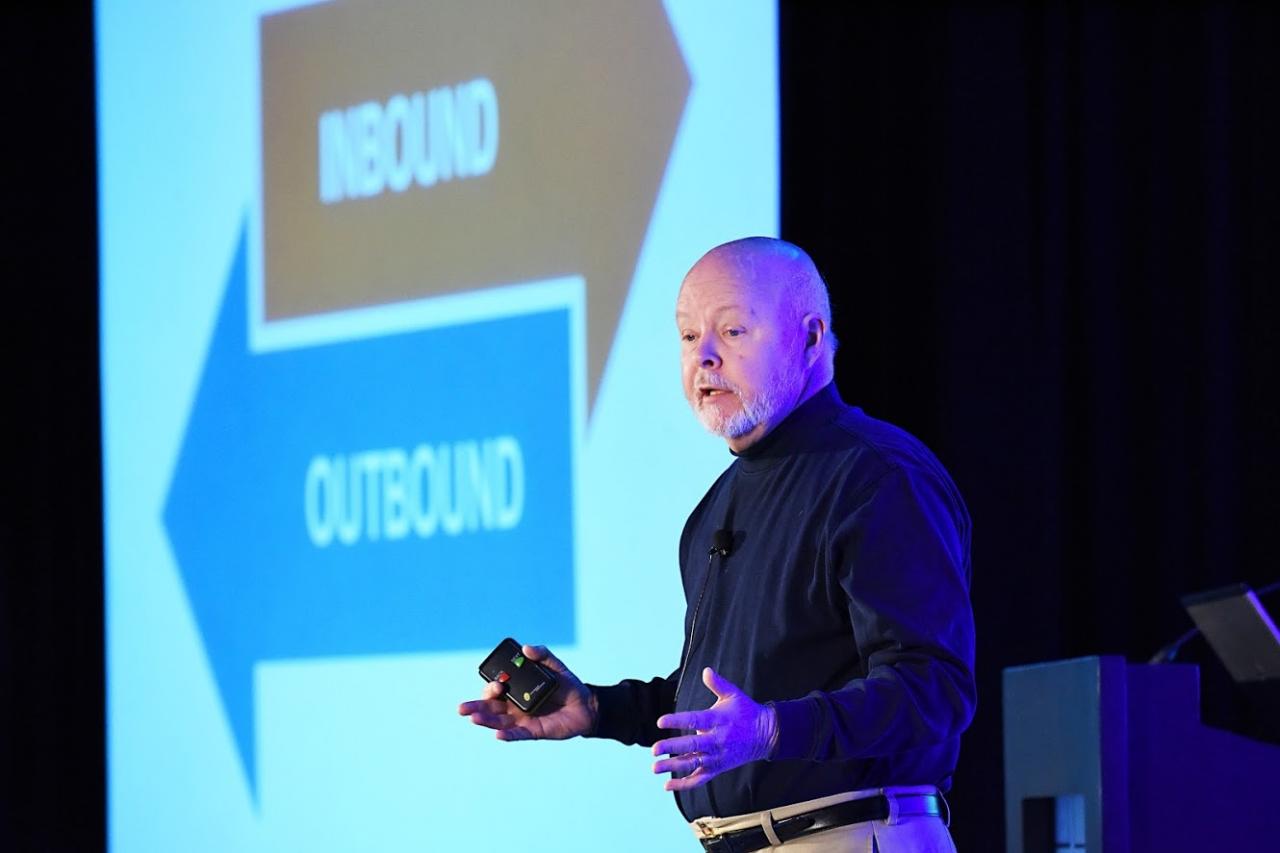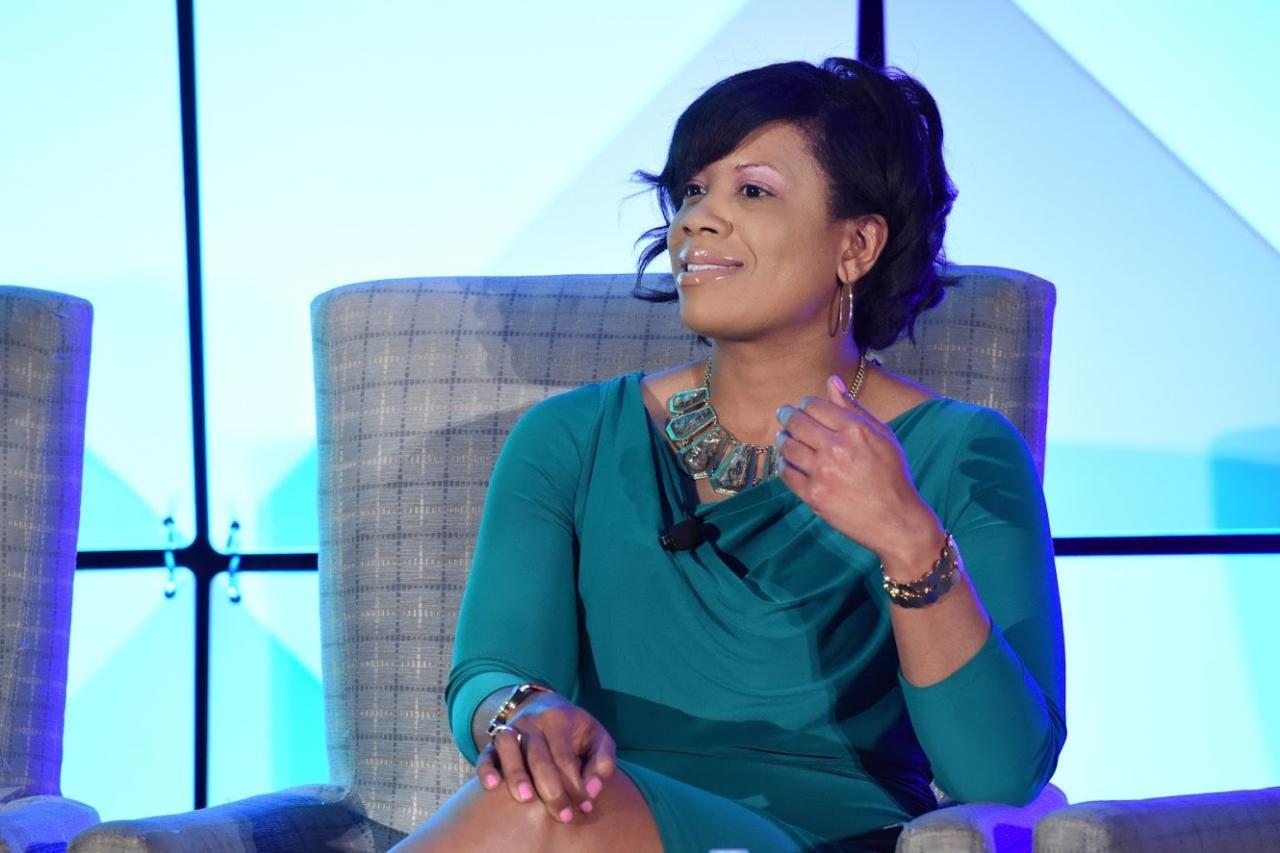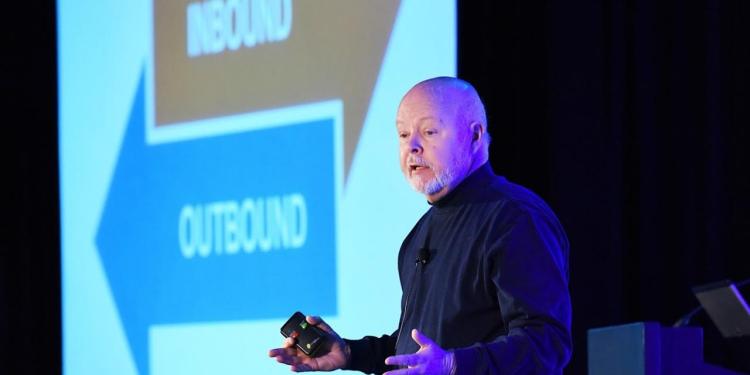May 10, 2016 Updated 5/10/2016
Email Print

Michael A. Marcotte Gary Slack of Slack and Co., says plastics businesses have more ways than ever to reach potential customers.
Itasca, Ill. — There’s one sector of the plastics industry where technology has been rapidly changing. Some experts say the key date was June 29, 2007, and since then everything has changed.
Have a guess for that seminal event? Was it a trade show? The introduction of a new material or process?
Not even close. It was the release of the first iPhone, running Apple’s iOS operating system. And the sector it changed was plastics marketing.
Sales and marketing specialists — and others interested in learning more about the topic — gathered May 3 in Itasca for Plastics News Marketing Summit.
The rise of digital technology, most recently the use of mobile devices, has meant big changes in the plastics industry. It started with websites, email marketing and search engine optimization 20 years ago; then it moved on to social media, branding and optimizing sites for mobile devices.
While consumers are very familiar with the changes in marketing, many in the plastics industry are still using yesterday’s technology — or worse. A recent Plastics News survey of plastics marketers found that 43 percent say they lack expertise that prevents them from successful implementation of their digital marketing goals.
Gary Slack, the chief experience officer at Slack and Co., gave the keynote address, and set the stage for all the changes in business-to-business (B2B) marketing, and what’s yet to come.
The good news for plastics marketers: They now have far more technical capabilities than they’ve ever had before. Slack called this “a golden age of B2B marketing.”

Michael A. Marcotte Teresa Schell says print advertising remains a strong platform for the plastics industry.
The bad news? With the emergence of data, like algorithms that find customers through search engine results and give them exactly the information they need, and improving artificial intelligence, we may be headed to a brave new world where machines make most marketing decisions, he said.
“We won’t all have jobs in a few short years,” said Slack, whose 28-year-old agency is one of the world’s best known in B2B marketing.
Why? Because buyers in B2B markets like plastics have so much information available to them — and growing numbers, especially millennials, know how to use it.
Slack said “many buyers these days are well through the cycle before they even made or had taken a sales call. They may have already made a decision by the time they pick up the phone to talk to a sales person,” he said.
“B2B buyers are all over the internet, looking at potential suppliers,” Slack said. “Our job increasingly is to make sure information — compelling information — is inserted wherever they are spending their time on the internet.”
Slack said successful marketers are constantly working to make sure their company’s content is easier to find, and more interesting, than their competitors’ — and being stimulating and compelling is critically important.
“So much content is lousy, wasted, just not having the desired affect,” he said.
So where should B2B marketers in the plastics industry be investing their time and resources? In social media, he said LinkedIn is the best bet.
“We see a lot of companies investing time in Facebook, Twitter, Instagram. In our experience, they’re overinvesting in these things,” Slack said.
More keys: make content very attractive. Use more infographics. Use fewer words — he has a rule that no blog post should be more than 250 words.
“Not bland and boring,” Slack said. “Chunk it up, make it more visual.”
Many companies are using video, and YouTube is a leading purveyor of B2B messages. That includes basic how-to videos, showing potential customers how to use your company’s products. But he also cited examples of companies that use humor, or music, very effectively.
“There are even some B2B marketers creating documentaries. They have pizzazz, so the videos get shared,” Slack said.
Slack did not ignore more conventional marketing tools, like mailers, postcards, trade shows.
“I’ve seen great results with oversized postcards, done well and done creatively, sent to a targeted audience and followed up by a phone call,” he said. “Events like trade shows suffered for a while, but they’re really coming back. The outlook for business events is strong.”
Slack says he understands that marketers may feel overwhelmed by all the new tools at their disposal.
“I talk to people who say ‘I’d love to do all that stuff, but I don’t have the budget, I don’t have the resources.’” The key is to learn from what others are doing and borrow their best ideas. He said marketers can get a “$ 1 million education just from studying [General Electric Co.’s] website.”
Print in the plastics sector

Michael A. Marcotte Alicia Webb, marketing communications manager at M. Holland Co.
Teresa Schell, president of B2B marketing firm Vive LLC in Milwaukee, gave a presentation that focused on print advertising in the plastics industry.
Print advertising is still effective for a variety of reasons, she said. The demographic makeup of the plastics industry plays a role.
“It’s the experience,” Schell said. “It’s the way we grew up.” Also, a physical magazine is less likely to “get lost in the digital debris,” she said. “Reading a print magazine requires the reader to slow down. There’s a presence.”
But while B2B consumers in the plastics sector like print magazines, Schell said print advertising still has to keep up with the latest trends. She suggests that marketers use strong imagery in their ads, with tight copy and a quick call to action. She suggested using a unique phone number, website and email address in print ads, to help measure the ads’ effectiveness.
Make sure print ads speak to readers on a personal level, are memorable, and connect right from the start, she said.
Alicia Webb, marketing communications manager at resin distributor M. Holland Co., talked about how her company uses print advertising that ties in with all the company’s marketing communication, including trade show exhibits and special events.
“Our audience likes to have something to hold on to that they can have their hands on and read,” Webb said. “Even if they don’t have time to read it when it comes into their office on Monday afternoons.”
Trade show marketing

Michael A. Marcotte Gene Sanders, president and CEO of G-Force Inc.
Gene Sanders talked about helping marketers make the most of their events.
Sanders has had a 35-year career managing trade shows including the massive NPE fair for the Society of the Plastics Industry Inc. He was formerly senior vice president of trade shows and conferences for SPI, now he is president and CEO of G-Force Inc., a forensic marketing and sales company specializing in trade show launch, acquisition and expansion.
Sanders joked that after being in charge of the 2009, 2012 and 2015 NPE shows, he’s seen a lot of mistakes from plastics marketers.
“I’ve seen what you’re all doing wrong. I wish I could talk to you all individually,” he said.
Exhibiting at a show doesn’t start with deciding on the size and location of a booth, he said. The process should start much earlier, deciding what your company plans to show, how many people will visit your booth.
One key, Sanders said, is to get noticed. And that’s not just about being near the show entrance — “location is overrated,” Sanders said.
“You want to be flamboyant,” Sanders said. “Don’t just show up, show off. Be there big. People don’t have a lot of time.”
Being at a trade show requires work before, during and after the show. Before the show, a key is actually inviting customers to your booth.
“The message should be, ‘when I see you at NPE,’ not ‘are you going to NPE?’” he said.
Post-show is where most companies drop the ball.
“People visit your booth, and nobody gets back to them. That is the biggest complaint. Get back to people! Have a plan,” Sanders said. “By the time someone gets back to their hotel room, they should receive some sort of communication that says ‘thanks for stopping by.’”
Public relations

Michael A. Marcotte Greg Hanoosh, president of Next Step Communications Inc.
Greg Hannoosh, president of Next Step Communications Inc., talked about the role of public relations in a marketing strategy.
PR — traditionally working with news media to encourage them to write stories about your company — is a “great value for the money,” Hanoosh said. When potential customers see stories with your company’s name, it creates the perception that you are an industry leader, and it enhances your credibility, he said.
What surprises Hannoosh is how few companies make an attempt to use PR.
“For some reason the plastics industry is way behind in promoting itself,” he said. “PR gets overlooked, but it really shouldn’t because it is a great, great value for the money.”
Hannoosh said a key is knowing the best publications for your message, and to know their niche and “attack” it. Some publications may be interested in news or feature stories, some in technical articles or white papers.
The biggest secret to doing successful PR is doing it, he said. Marketers need to know their company’s future business targets, and come up with a plan to reach those companies.
Another tip: to work with B2B media that cover trade shows where your company exhibits. Invite the press to visit your booth, or even hold a press conference — if you have important news to share.























